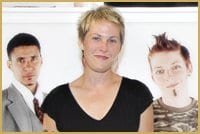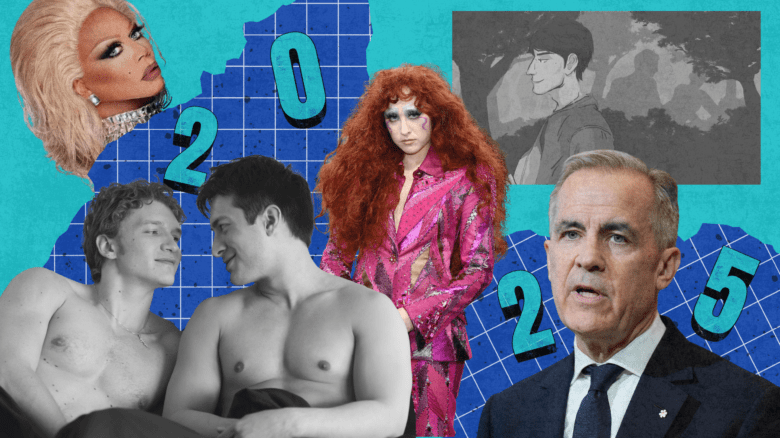Testosterone may have been sparse on a physical level but it abounded in spirit opening night at Toni Latour’s The Drag King Project, at Gallery Gachet.
“Butch lesbians are a threat to mainstream culture,” says Latour, against a backdrop of mercurial photographs and the video she recently produced of this city’s drag kings.
The Ontario native hopes the focus of her latest project–drag kings, butch lesbians and transgendered men–will help dispel widely accepted stereotypes and shine a light on the growing phenomenon of the drag king.
“For this show,” she says, “I think it’s important to represent queer culture for queer culture. We’ve seen drag queens in mainstream culture; most people are aware of what a drag queen is.” Most people, however, are still asking Latour what drag kings are.
Along with the desire to increase their visibility, Latour says she wanted “to elevate the drag kings to the level that they deserve, and just make images of drag kings that are gorgeous, seductive and sexy.”
Latour saw her first drag show shortly after moving to Vancouver five years ago, and was “enamoured” by the performers. “That admiration built over the years,” she says. It would inspire one of her most compelling exhibitions to date.
To create The Drag King Project, Latour applied for two grants–one from the BC Arts Council and another from the Canada Council for the Arts, and was delighted that both committees came through. “I was thrilled because I didn’t think this kind of content would be supported in that way.”
Kings from $3 Bill and DK United (DKU), two local drag king troupes, quickly jumped on board the project. “It’s definitely the most interest any artist has taken in the drag king scene,” says 23-year-old DKU member Sammy Tomato, who posed for photographs as well as performed a Prince track for the video installation.
Tomato notes how difficult it is for the troupes to fund photo shoots, as most of the money they raise goes to travel costs for their tours. “[Latour’s show] looks fabulous–so professional, so well-done.”
“There’s a sexiness to the performers,” says Latour, “and I wanted to let that shine in the images. They also have a real sense of confidence and self-awareness, which I think is sexy, and part of how we express our sexuality. I think that so many times that can be a taboo, but repressing that can be problematic.”
Latour shot the photographs of the kings and filmed their performances over a miniscule two days. She also interviewed them and turned a number of quotes into textual excerpts, which were printed onto walls in the gallery. The diverse range of quotes includes: “I think drag has the capability of being subversive–it isn’t always, a lot of the time it can reinforce stereotypes, but thinking, going into it consciously is important for me”; and “I learned just how important it is to parody dominant masculinity.”
“Toni is a stellar artist,” says Irwin Oostindie, executive director at Gallery Gachet. “She excels in presenting her portraiture in the highest quality photographic form.” It was Oostindie who would invite Latour to exhibit there.
“The gallery’s mandate is about outsider art,” he says. Its 20 annual shows are dedicated to showcasing the art of marginalized communities who otherwise would have little chance of being represented professionally. “We’re comfortable in presenting queer art. [Toni’s show] is a good fit for our mandate.”
Fellow gallery member Diane Thorn agrees: “Gachet is devoted to all things not-quite-usual.” She adds that the diversity of shows is increasing, and that the theme of drag kings is not wholly unrelated to the last few exhibitions, which displayed artwork pertaining to violence against women.
Latour is no stranger to violent backlash against butch lesbians. Partly to blame, she argues, is the media, which chooses only to represent femme lesbians–and that often inaccurately.
“[Butch lesbians] aren’t feminized for straight male consumption,” she says. “They threaten mainstream ideas of how women should look and behave, to the point where they are often the target of violence. They are almost invisible in mainstream culture and I think that’s part of the problem. The more we see drag kings, butch dykes and trans men represented, the less fear and ignorance there will be.
“I want to contribute to local queer history,” she declares. Her powerful representations of unabashedly unfeminine yet willfully sexual lesbians and transgendered boys are a positive contribution–not only to queer Vancouver history, but to gay activism.

 Why you can trust Xtra
Why you can trust Xtra


